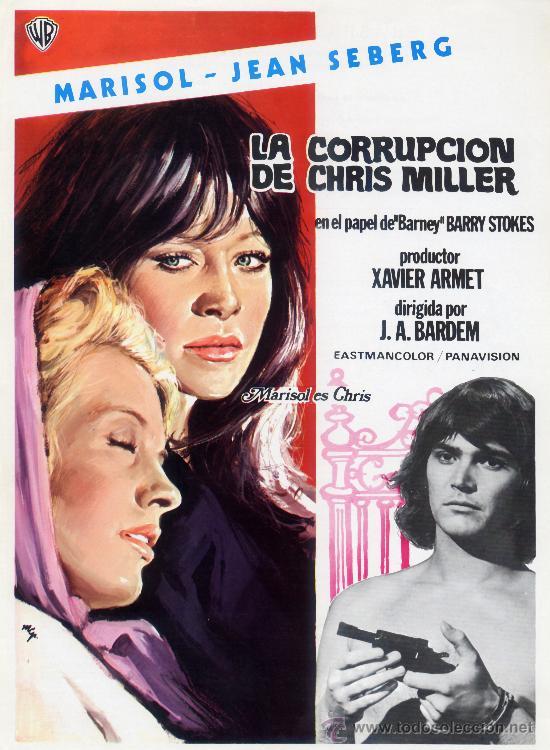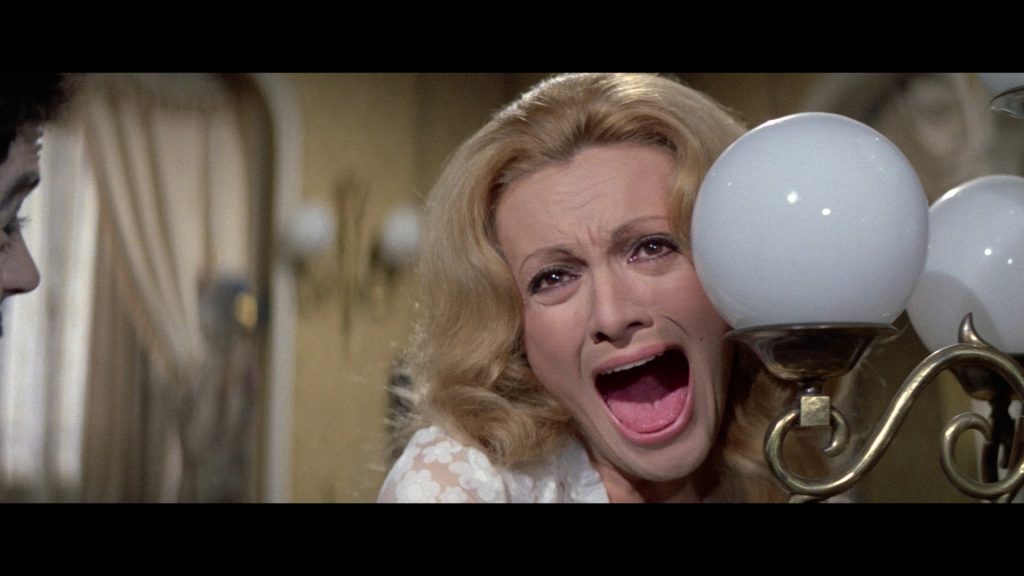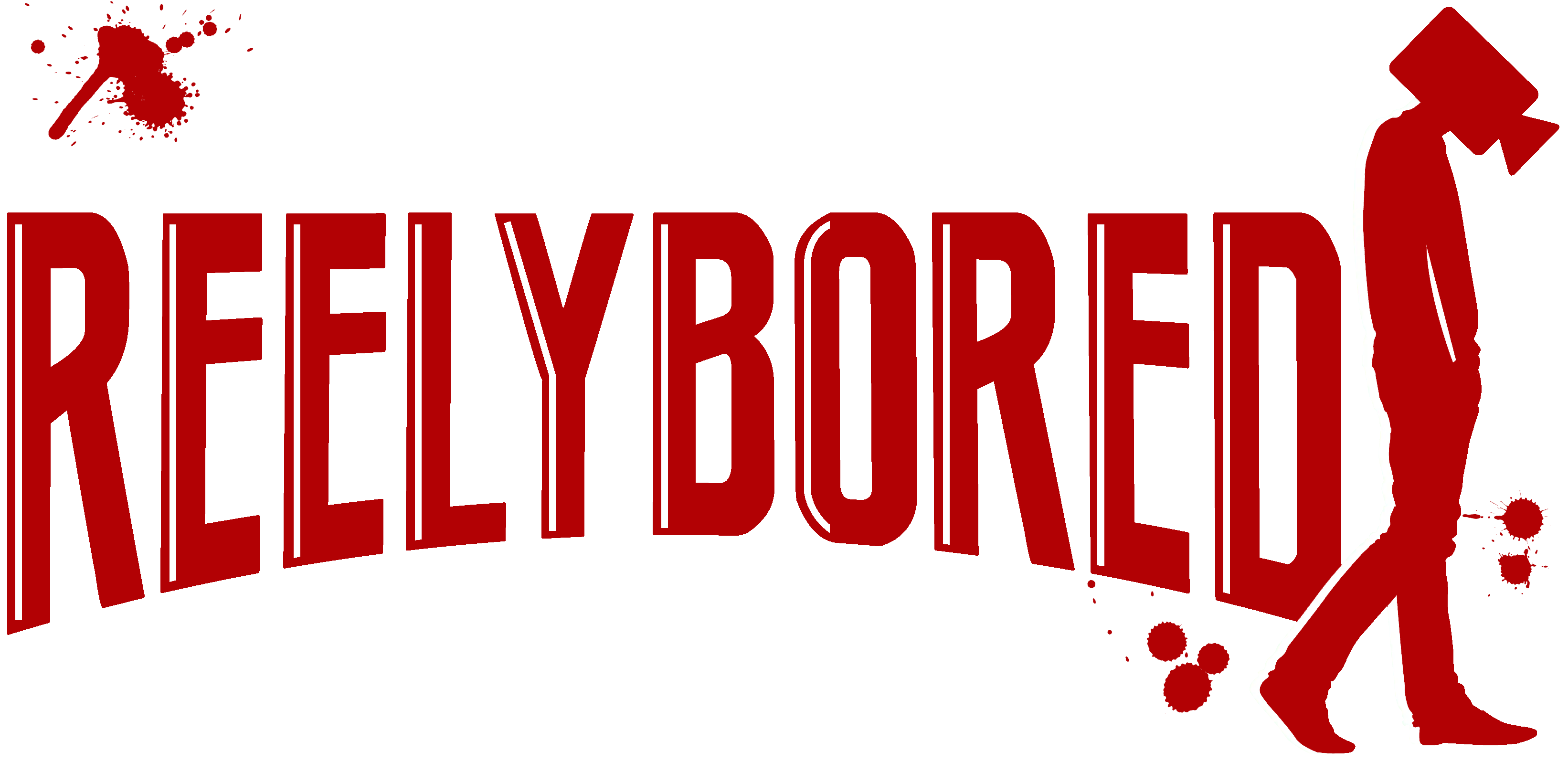
Abandoned by their husband/father, a traumatized woman and her disturbed stepdaughter hire a drifter handyman at their secluded estate while a series of murders begins.
Giallo Movie Reviews: The Corruption of Chris Miller
While perusing the interweb and reading forums about Giallo, I discovered that there are so, so, so many films that I never heard of. Many discussions turned into a friendly debate about films that many consider Gialli and others don’t, which leads you down another rabbit hole. Yet another rabbit hole is films outside of Italy such as American Giallo films like Brian de Palma’s Dressed to Kill, John Carpenter’s Eyes of Laura Mars, two films discussed by Quentin Tarantino in his The Video Archives Podcast, or German Krimi (crime) films, a predecessor to Giallo. Then, there is also Spanish Giallo. This information was new to me and I became enthralled to learn that so many films are out there waiting for my eyes to feast on. It was also a huge reality check for me in that I thought I knew a fair bit about cinema only to truly realize that I know little to nothing about the art form and its history and reach around the globe. This was exciting and I could not wait to dive into these foreign films.

The first film that fancied my interest was Juan Antonio Bardem’s 1973 Spanish film, The Corruption of Chris Miller. And yes, the director is the uncle of Javier Bardem which was a pleasant surprise. The Corruption of Chris Miller revolves around two women, Ruth Miller (Jean Seberg), stepmother to Chris Miller (Marisol) who seclude themselves inside a large estate after being abandoned by Ruth’s husband, Chris’ father. This makes for an uncomfortable situation as the two women are at odds with one another and Ruth wants to make it a point to make her stepdaughter’s life as difficult as she can make it. To add to Chris’ torment, the young woman is suffering from PTSD (post-traumatic stress disorder r) after having suffered an incomprehensible experience at the hands of a stranger in her past. Whenever there is a thunderstorm, Chris gets triggered, loses all self-control, and even becomes violent. She relies on Ruth to comfort her and bring her back to reality and safety. Ruth is well aware of this trauma and takes full advantage, holding this weakness over Chris’ head and using her past ordeal as leverage. The affiliation between the two women, as presented in the film is a love-hate relationship with the common bond being Chris’ father, Ruth’s estranged husband whom she wants to have her revenge on by breaking, shattering, and corrupting Chris both mentally and emotionally. There is, however, an interesting and enticing dynamic between the two women despite their differences; this is highlighted by the performances of both Seberg and Marisol that keep us pondering off what else goes on behind closed doors and ulterior motives.

The film opens in the Spanish countryside on a gray and dreary afternoon as the heavens open to a barrage of heavy downpours. The camera pans across an empty road and onto a recently abandoned patio set, perhaps on account of the rain and we stop at an impressive residence. It is clear that a person of wealth and prominence lives here. The camera zooms into a window on the top floor and we then find ourselves in Perla’s (Perla Crisal) bedroom. She lays facedown on the bed, asleep, when her arm reaches beside her as if looking for someone. The empty bed awakes her and, as if calling for a pet, she whistles as if to beckon her guest. When there is no answer, she rises from her bed and makes her way downstairs in her nightgown. When downstairs, again she whistles to no avail.
As Perla walks through the home, we get more insight into her lavish lifestyle and her pompous demeanor confirms that she is wealthy and a woman of status. Eventually, she calls out for the guest to reveal himself threatening the arrival of her husband. This prompts the stranger to appear in what I would consider to be one of the oddest and creepiest disguises. Perla’s companion reveals themselves in a Charles Chaplin outfit, complete with a cane, hat, and a Chaplin mask to boot. None of these phases Perla. Instead, she is hellbent on getting this person out of her house. The stranger doesn’t utter a word as if Chaplin himself has just come out of one of his silent films and, alas, we know that we have just been introduced to the killer. After a brief banter and complaint by Perla, Chaplin eventually slays Perla, robs her, leaves the house, and discards his outfit and Chaplin’s mask onto the wet ground as he runs away from the scene. After this, we finally get the opening credits.

The opening scene provides us with little to no information aside from establishing that there is a murder on the loose and the subsequent events of the film are set into motion. It is now where we meet the duo, Ruth and Chris and immediately we can see that there is something amiss with the two. We follow what seems like a typical day at the residence which appears to be riding horseback, swimming in the pool, sunbathing, and doing absolutely nothing or whatever their hearts desire; some might say they live a lucky lifestyle, others might call it a bore. This life, however, is interrupted when Ruth discovers a stranger, Barney (Barry Stokes) fast asleep in her garage/chicken coup. After a quick quibble, the two become friendly and Barney sticks around. It isn’t long before the trio become acquainted and Ruth sees this as an opportunity to further torment Chris but things don’t go accordingly as Barney has other plans and motives in mind.

The Corruption of Chris Miller, while being a Spanish Giallo, lends heavily from Italian cinema but Bardem incorporates his own style and flare to the picture. There is a point in the film where I completely forgot about the murder at the beginning as Bardem entangles us with the story of Ruth, Chris’ struggles, and Barney at the estate. The middle portion of the film plays out like an intriguing daytime soap and that is not to say that it is a bad thing. It isn’t until later in the film, perhaps the final twenty-five percent of the film that we are reintroduced to the killings and the Giallo aspect returns with the killer, in a new disguise, stalking its new prey which we see in the classic point of view. Expectations are subverted and when you think you know what’s happening you will be pleasantly surprised to know that you were wrong, or at last think you are. By the end of the film, there is a definitive killer, however, there are some questions and plot points that are left unanswered and left for the audience to do a bit of detective work. This is not a bad thing but, rather opens things up for conversation. What’s more is that there are two endings: the original Spanish ending and an international ending which I was a fan of the way it was shot and edited, especially with the music. Either ending would suffice despite them both having different results.
The Corruption of Chris Miller did not rely on any of the tropes popularized by Dario Argento three years prior with his The Bird with the Crystal Plumage. No, instead, Bardem borrows a few elements of Argento’s style but makes this his unique addition to the genre. This film relied on story, tone, and atmosphere rather than loud scares, stylish set pieces, and gore to get an impact. There was an ‘Aha!’ moment that brought back a plot point earlier in the film that was smart and surprised me as I thought nothing of it initially but to see come back full circle was a wonderful cherry on top. While not breaking any new ground, The Corruption of Chris Miller is a wonderful exercise in storytelling and filmmaking.
